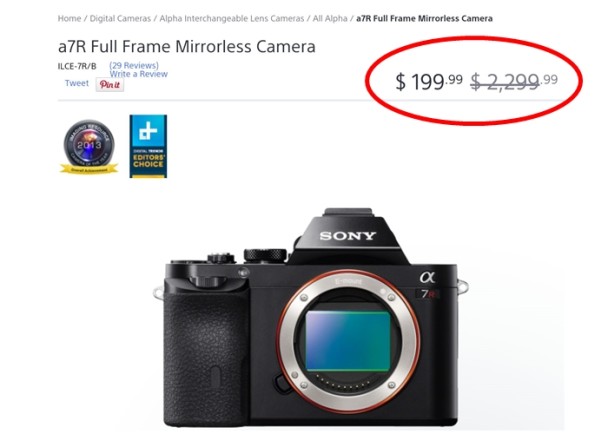
6月1日是全世界兒童的節日,每到這一天,人們都會用各種適合於當地兒童的方式,舉行慶祝。可是在印度尼西亞,卻有這樣兩個來自中國的孩子——大寶和小寶,他們本應該像所有孩子一樣生活在父母的關愛中,不幸的是因為中共對法輪功的殘酷迫害,年幼的他們不得不一次又一次的與撫養他們的姥爺和姥姥、深愛他們的爸爸、媽媽生離死別。他們不是孤兒,可是在今年的「兒童節」,他們卻成了無家可歸的孩子。
弟弟小寶今年7歲,哥哥大寶今年10歲。在他們還沒有來到這個世界之前,1997年,住在中國吉林省延吉市朝陽街道的雙陽小區的大寶和小寶的爸爸媽媽、姥姥姥爺就先後開始修煉法輪大法了,修煉後全家人身心受益,家庭和樂美滿。
可是好景不長,1999年7月20日,江澤民因變態妒忌法輪功創始人李洪志先生,一意孤行發動對上億修煉「真、善、忍」的法輪功群體的殘酷鎮壓,甚至下令活摘法輪功學員器官。江澤民利用中共政權把古今中外的一切邪惡手段都用來對付法輪功,大寶和小寶一家也未能倖免。
接下來的一連串的悲慘變故,使他們剛剛來到這個世界,就失去了溫暖的家,兩個幼小的生命被迫承受著與親人一次又一次的生離死別。姥姥姥爺被先後迫害致死,爸爸被非法關進監獄,媽媽被迫害的精神失常。在他們的記憶中,所見到的就是警察、所謂的「政府人員」闖進家中抄家、抓人、打人、搶劫的情景,恐怖一直伴隨著他們,直到他們逃離中國。
媽媽楊麗娟被迫害精神失常
大寶和小寶的媽媽楊麗娟,今年39歲,1999年7月20日後,被非法拘留、非法監視居住、強行洗腦迫害。在種種的殘酷迫害中,楊麗娟絕食抗議,慘遭野蠻灌食,中共警察還用電棍電擊她,拳打腳踢更是平常事,致使她精神上受到了嚴重的摧殘。
2001年,楊麗娟再次被非法綁架,送入吉林省黑嘴子女子勞教所勞教迫害了一年。其間遭受到精神洗腦、奴工勞役、強行轉化的身心雙方面的摧殘。
2002年出獄後,5月,楊麗娟到黑龍江省牡丹江市探望親戚,在回來的路上被牡丹江鐵路公安局派出所以攜帶法輪功資料為由,強行劫持到牡丹江愛河看守所,被超期拘押了7個多月。其間看守所獄警不斷體罰、打罵迫害她,甚至給楊麗娟打吊瓶(不知打的什麼葯),導致楊麗娟開始精神失常。之後,她又送入黑龍江省哈爾濱女子戒毒勞教所殘酷迫害。
在戒毒所里,獄警們繼續體罰打罵、長期不讓睡覺、還把她銬在暖氣片兒上迫害一宿。後來獄警們對楊麗娟又一次採用了打毒針的迫害方式,致使楊麗娟精神嚴重失常、瘋瘋癲癲,生命危在旦夕。之後勞教所怕承擔責任,才通知家人將精神失常的楊麗娟接回家。
父親李光石被非法判刑5年
大寶和小寶的父親李光石,1999年後因堅修法輪大法,曾兩次被非法勞教,2008年又被非法判刑5年,關押在吉林監獄,監獄曾以其煉功為名,將他關押進嚴管小號。在吉林監獄嚴管隊有抻床,被關押在小號和嚴管的人不準穿內衣褲和襪子,只穿一套棉襖棉褲,暖氣只給到不凍的溫度,天窗開著,雪花可以飄進去,還要罰坐,每天兩頓很稀的玉米面粥,被押人員飢寒交迫。
姥姥殷鳳琴墜樓身亡
姥姥殷鳳琴也遭受了殘酷的迫害,2000年被非法勞教2年,劫持到臭名昭彰的吉林省黑嘴子女子勞教所迫害,在勞教所里遭受了強制精神洗腦、奴工勞役等身心摧殘後,最後殷鳳琴雙眼被迫害得近乎失明。
2002年3月回家後,仍舊不斷的受到街道等惡人的騷擾。被非法拘留、非法監視居住等迫害。
2010年1月29日上午,吉林省延吉市雙陽社區工作人員和兩名男子(一個是吉林來的姓馬和一個延吉姓穆的)到殷鳳琴家對其進行「轉化」迫害,遭到殷鳳琴的抵制。中共政府人員就惱羞成怒地叫來延吉市「610」和國保大隊的惡警,妄圖強行綁架殷鳳琴。
在國保大隊警察和一大幫社區工作人員的強行劫持中,有李成哲、朴貴南兩名警察貼身監視她穿換衣服,當時在場的還有10多人。但殷鳳琴從自家五樓陽台墜下,導致全身肋骨、臂骨、腿骨、脊椎骨等處多處骨折,送到延邊醫院搶救無效,含冤離世。
姥爺楊福進含冤離世
姥爺楊福進曾因煉功身心受益,本著澄清事實真相的願望到省政府上訪,說真話的善良人卻被多次非法關押迫害。2000年10月,楊福進又一次進京上訪中,在半途被瀋陽公安局警察綁架,被遣返當地後一直被非法關押在延吉看守所近一個月之久,後被非法勞教2年。先在延邊勞教所關押後又轉至吉林省九台飲馬河勞教所,在勞教所里遭受了精神洗腦、奴工勞役等身心摧殘。
2002年8月份,楊福進被放回家。但隨之而來的迫害還遠遠沒結束,回家後,被單位開除。也從此沒了經濟來源,全家僅靠楊福進老伴那點退休金維持生活。
2003年起,中共當局惡人們開始對楊福進家非法監視居住,朝陽派出所和街道辦事處的惡人還經常騷擾他家。
2004年5月,延吉市公安局和朝陽派出所惡人用電鑽鑽壞楊福進家的門鎖後,破門而入,強行抄家,並搶走大法資料等私人物品。楊福進一家被迫流離失所,在黑龍江省牡丹江市住了4年。
2008年,延邊州市國保大隊肖彬、朴貴男等惡警夥同牡丹江國保大隊惡人一起,將楊福進和女婿李光石在牡丹江市綁架。被關押於敦化市看守所一個多月後又轉到圖門市看守所超期拘押了5個月,後又轉至延吉看守所,惡人對他進行了非法庭審後,因其出現腦血栓癥狀(在敦化被關押期間,楊福進被惡警陳潤龍上大掛酷刑迫害,時間長達一上午,被折磨成腦血栓加重癥狀),最後判4年緩3年,回家治療。
姥姥殷鳳琴被迫害死後,姥爺楊福進不僅申冤無門,還受到「610」、公安局等多個部門的恐嚇、施壓。走頭無路的楊福進拖著行動不便的身體,由兒子兒媳攙扶帶著精神失常的女兒和兩個年幼的外孫,步履艱難的到州市政府、政法委等相關部門投訴,結果都是無果而歸。並受到跟蹤,62歲的楊福進悲憤交加,精神受了沉重的打擊,在老伴去世幾個月後,也含冤離世。
幾經波折逃亡到印度尼西亞
媽媽楊麗娟被迫害精神失常,失去了所有自理能力後,連吃飯都得姥姥照顧,在姥姥被迫害死之前稍有好轉,可現在姥姥在有兩名惡警貼身監視她穿換衣服,多名警察在場的情況下出現意外死亡,媽媽楊麗娟又出現精神不正常狀態。姥爺去世後,大寶和小寶成了無家可歸的孩子,不得已只得由親屬領養。
哥哥被遠在農村的67歲的爺爺接走撫養,兩歲的弟弟小寶因沒人收養,各家流浪,有時和精神失常的媽媽住在一起,小寶常常一整天都吃不上一頓飯,餓得都起不來。在冰天雪地的大冬天,精神失常的媽媽會穿著短衣褲,帶著同樣短衣褲的小寶出門,被好心人看到後帶回家。才兩歲大的小寶就已經會掃地、收拾碗筷了。
一些善良的人看孩子實在太可憐了,找到國外在延邊辦的孤兒院,希望可以收留可憐的孩子,孤兒院院長聽了他們的遭遇後,含著眼淚說:「聽了後真是同情這孩子,我們很想幫助,可是必須經過民政局批准後我們才能收養。」最後的結果是小寶沒有辦法去。在中國,因為家長煉法輪功,連2歲的孩子都不能得到兒童保護法的保護。
因為他們家有監控,一些接觸孩子的法輪功學員去幫助他們,也慘遭迫害,一位72歲的法輪功學員因為照顧小寶,被非法判刑4年。
後來大寶和小寶的不幸遭遇被發到海外「明慧網」上,2011年2月,從未謀面的當地法輪功學員阿雲,幾經輾轉最後終於找到了兩個孩子。
2012年9月,阿雲徵得孩子家人的同意,成了他們的監護人,之後,阿雲帶著兩個孩子終於成功的逃離了中國,背井離鄉暫住在印度尼西亞,等待聯合國的救助。
如今大寶、小寶和他們的父母天各一方,「兒童節」前夕,出生剛剛三個月父親就被非法判刑5年,至今沒見過父親的小寶對「新唐人」記者表示,他很想見爸爸,想念爸爸媽媽,哥哥大寶更擔心他們再次被抓,更希望自己能像其他小朋友一樣和父母一起生活。但是大寶說:「我喜歡這裡,不喜歡中國,因為中國有很多警察,我不想回去。」
大寶希望爸爸媽媽也能夠出來,不再遭受迫害。
同時從來沒有過過「兒童節」,已經到了就學年齡的兩個孩子,希望自己能像其他孩子一樣上學,和其他小朋友一樣在兒童節這天收到自己喜歡的禮物。大寶說自己從來沒有玩過變形金剛和遙控飛機,兒童節很想收到這樣的禮物。弟弟小寶希望可以收到巧克力和玩具小汽車的禮物。




![[img]http://static.apple.nextmedia.com/images/e-paper/20150603/large/1433319304_18e2.jpg[/img]](http://static.apple.nextmedia.com/images/e-paper/20150603/large/1433319304_18e2.jpg)


